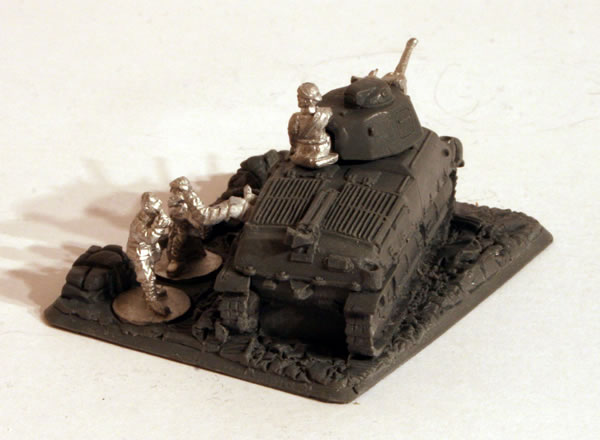Despite having been designed from 1933 as a rather slow but well-armoured light infantry support tank, the type was initially rejected by the French Infantry because it proved difficult to steer while driving cross-country, instead being adopted in 1936 by the French Cavalry. From 1938 an improved version was produced with a stronger engine, the Char léger modèle 1935 H modifié 39, that from 1940 was also fitted with a longer, more powerful 37 mm gun.
Having made up the models, and having given the models a white undercoat, the next stage was to basecoat the models. In order to add shadow I gave the underneath of all three models a spray of Warpaint German Armour.
See the workbench feature on the Flames of War French Hotchkiss H-39.







































